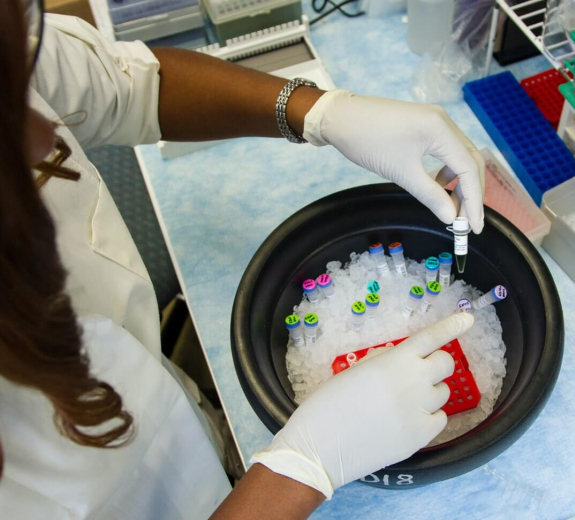
One Step Closer to Preventing Celiac Disease
Celiac disease, like all autoimmune diseases, has no cure. People with the condition must adhere to a strict gluten-free diet or face symptoms like nausea, vomiting, ulcers and intestinal damage. This means cutting out breads, pastas, anything that contains flour and many sauces and seasonings. Living with this condition often means constant anxiety about eating, and makes things like parties with shared food and dining at restaurants difficult and stressful.
BRI Biostatistician Tee Bahnson recently published research that may have uncovered what many families with celiac have been hoping for: A way to prevent the condition in children.
“We found that exposing kids to high levels of gluten starting at around four months of age may prevent celiac disease,” Gideon Lack, MD, who led the study. “We need to confirm our findings in a much larger study, but this data is promising.”
Celiac Disease: At the Interface of Allergy and Autoimmunity
Dr. Lack, based at King’s College in London, is a world leader in pediatric allergy research. He worked with the Immune Tolerance Network, headquartered at BRI, and many other scientists to launch the Learning Early About Peanut (LEAP) allergy study. This paradigm-shifting study showed that early exposure to peanuts can help prevent peanut allergies. Researchers wanted to see if the same approach could help prevent wheat allergies — and potentially prevent celiac disease too.
“Celiac disease is at the interface of allergies and autoimmune disease,” Dr. Lack says. “It occurs when an abnormal response to gluten triggers the immune system to attack gastrointestinal tissue. But we wanted to see if we could translate the concept of early exposure from allergy to celiac.”
Researchers studied over 1,000 babies, split into two groups, in the Enquiring About Tolerance (EAT) study: One group received wheat in their diet starting at four months of age and the other was fed exclusively breast milk until six months of age. While other researchers had tried this approach and found no significant difference, this study introduced gluten earlier in life and at much higher levels than done in previous studies.
“The prevalence of celiac disease in the breastmilk-only group was quite high, at 1.4 percent at three years of age,” Dr. Lack says. “And there wasn’t a single case in the group that was introduced to wheat.”
Moving forward, researchers will conduct this experiment again in a larger group of children to validate these findings.
Finding Causation, Not Just Correlation
As a biostatistician, Tee Bahnson uses statistics to analyze and summarize biological data. Tee has been working with the team in London for nearly a decade. He has helped them design or analyze many of their allergy trials conducted in the UK, including the celiac study.
“These data sets are complex and can have thousands of variables which influence health outcomes in different ways,” Tee says. “My role is to apply biostatistical methods to control for key variables and get us closer to making claims of causation, rather than just correlation or association.”
Though many of his classmates from graduate school went on to apply their statistical analysis skills to tech or banking, Tee wanted to apply them to science.
“I came from a family of physicians and scientists, and initially wanted to be a doctor,” Tee says. “But when I was introduced to biostatistics by two professors during summer internships in college, I saw a new way to help push medicine forward.”
This paved the way for him to bring together his interests in medicine and statistics to help make key medical advances at BRI and beyond.
"The benefit of working with Tee Bahnson and Benaroya Research Institute is invaluable and immeasurable," Dr. Lack says. "Their unique ability to combine expertise in statistical analysis and clinical immunology is helping make insights that move us closer to prevention and cures."
Immuno-what? Hear the latest from BRI
Keep up to date on our latest research, new clinical trials and exciting publications.


